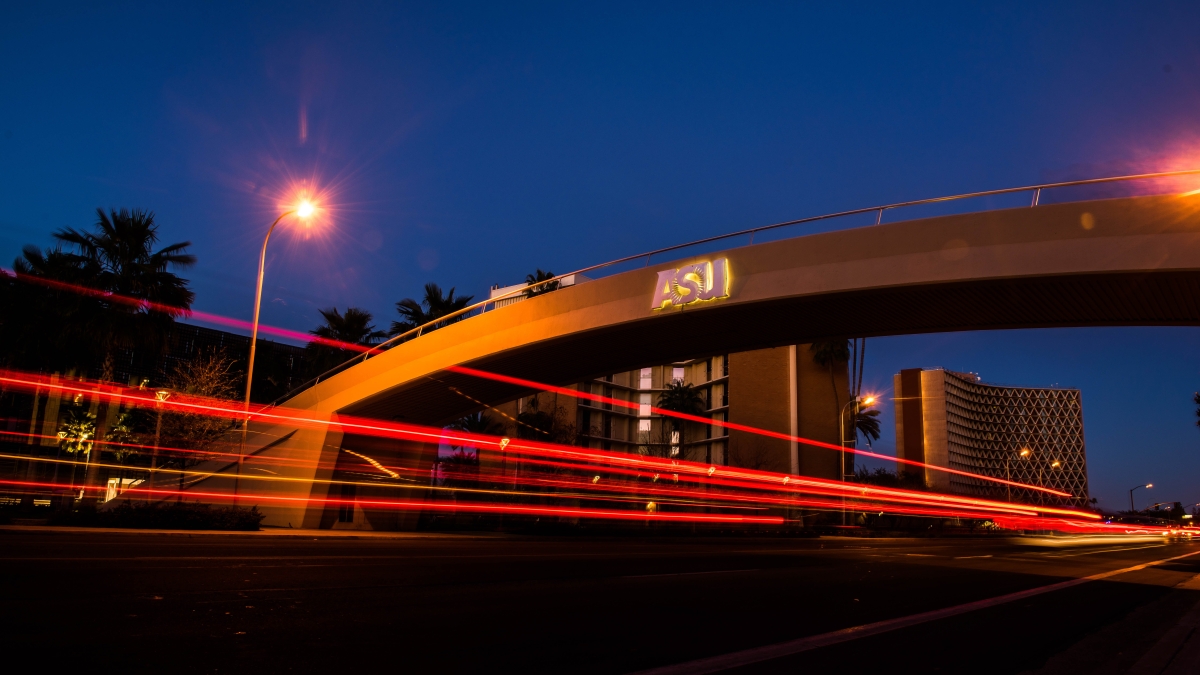Cox Collaboratory at ASU partners with research team to explore smart traffic solutions

If you’ve been driving around Phoenix recently, you might have done a double take when glancing at the car next to you — some of them are without a driver, and on occasion, without any occupants in the vehicle at all.
The recent surge of artificial intelligence and machine learning technologies has allowed for this proliferation of autonomous vehicles in Phoenix — perhaps most recognizably Waymo — and across the country. And the trend is showing no signs of slowing down. The Insurance Institute for Highway Safety anticipates that there will be 3.5 million self-driving vehicles on U.S. roads by 2025, and up to 4.5 million by 2030.
Because of this acceleration into a world with autonomous vehicles, safety and security are key priorities for municipalities and local cities. Traffic monitoring, powered by emerging technologies, will allow local governments to keep a careful eye on the community to maintain the highest standards of care for those on the road.
Yezhou "YZ" Yang, associate professor at the School of Computing and Augmented Intelligence at Arizona State University, researches computer vision and robot perception with his team. Key to this research is understanding situational awareness, which uses sensor data to understand the surrounding environment and what’s taking place.
Automating traffic monitoring smart technology, such as sensors and cameras, can make roads safer for drivers. Yang, for example, has observed how city cameras around the Traffic Operations Center of Arizona and Phoenix are able to effectively monitor and detect when someone is in need of assistance. However, because they are manually monitored, they lack the ability to process real-time feedback. “The ultimate goal is to make these processes autonomous,” Yang said.
“We can realize and recognize situations with cameras and automate the cameras to do the best situation monitoring — that will reduce response time,” Yang said. “In urgent situations, one second — or one-tenth of a second — shortened response time may lead to life and death.”
But how will local governments and private companies know the best technologies to monitor the roads? What are the advantages and disadvantages of each solution?
To tackle these questions, Yang is working with the Cox Connected Environments Collaboratory at ASU to obtain an unbiased evaluation of technology effectiveness and performance. Entering its fifth year, the Cox Collaboratory — located at ASU Skysong — has thrived by combining the industry leadership of Cox Communications with the research capability of ASU.
Through the collaboration between Yang and the Cox Collaboratory, this evaluation will determine the strongest detection technology and automated traffic signal management technology to make local roads — while shared with autonomous vehicles — as safe as possible.
What solutions are being measured?
In all aspects of the evaluation, the team determines if the smart technology solutions preserve the privacy of those being monitored. While cameras monitor traffic and safety, Yang shares that it’s important to consider how to utilize solutions that provide enough metadata needed while protecting the public’s private information.
“As a researcher, we keep social good in mind when we are looking at solutions,” he said. “We are trying to reduce the opportunity for the data to be breached.”
To rank technology solutions, Yang and his team look at three dimensions:
Hardware: This includes looking at the types of sensors (i.e., high-definition or 360-degree cameras), lidar radar and sensor fusion, or fused sensor input, to create a sensory image.
Software: The team is reviewing the capabilities of the technology — some can track and detect vehicles; some can detect acceleration and speed of vehicles; some can evaluate environmental conditions; and others can identify pedestrians.
Energy consumption: While safety is the top priority, sustainability is also measured by evaluating how energy efficient solutions are. In doing so, solar or locally powered technology can be considered. This is beneficial to know because the solutions won’t drain infrastructure power and are easier to deploy, especially in rural and underserved areas.
Measuing success and moving forward
While unbiased evaluation is always the challenge, Yang said, the research team is utilizing objective metrics — such as accuracy, energy used and estimation errors — to evaluate the hardware, software and energy consumption of smart traffic technology, like cameras and sensors. Then, the team compares vendor solutions’ outputs with data collected from previous research.
The goal? For the ASU Collaboratory to gain an impartial evaluation of technology effectiveness and performance.
Yang and his team have completed the first round of vendor surveying and will continue into the next phase of the project, in which they will further identify vendors and acquire devices for on-site lab testing. This data collection and collaboration of validating software and testing hardware will be completed by January 2024.
Once the research is finished, most of it will be publicly accessible, available as open source and included in a white paper that shares the evaluation of in-market products for intelligent transportation system infrastructures. “Hopefully, with our efforts, we can directly apply, get feedback, refine our work and then scale our research worldwide,” Yang said. “It’s very exciting.”
Written by Stephanie Mitchell King
More Science and technology

NASA launches space telescope to chart the sky and millions of galaxies
California’s Vandenberg Space Force Base was the site for Tuesday’s 8:10 p.m. launch of the NASA SPHEREx mission aboard a SpaceX…

ASU-led Southwest Sustainability Innovation Engine funds 8 promising tech startups
In the startup world, tech companies often fall victim to what’s known as the “valley of death” — the gap between technological…

New study explores the link between diet, blood sugar and cancer risk across species
Researchers have long known that diet exerts a profound influence on health, including the risk of developing cancer. A new study…

